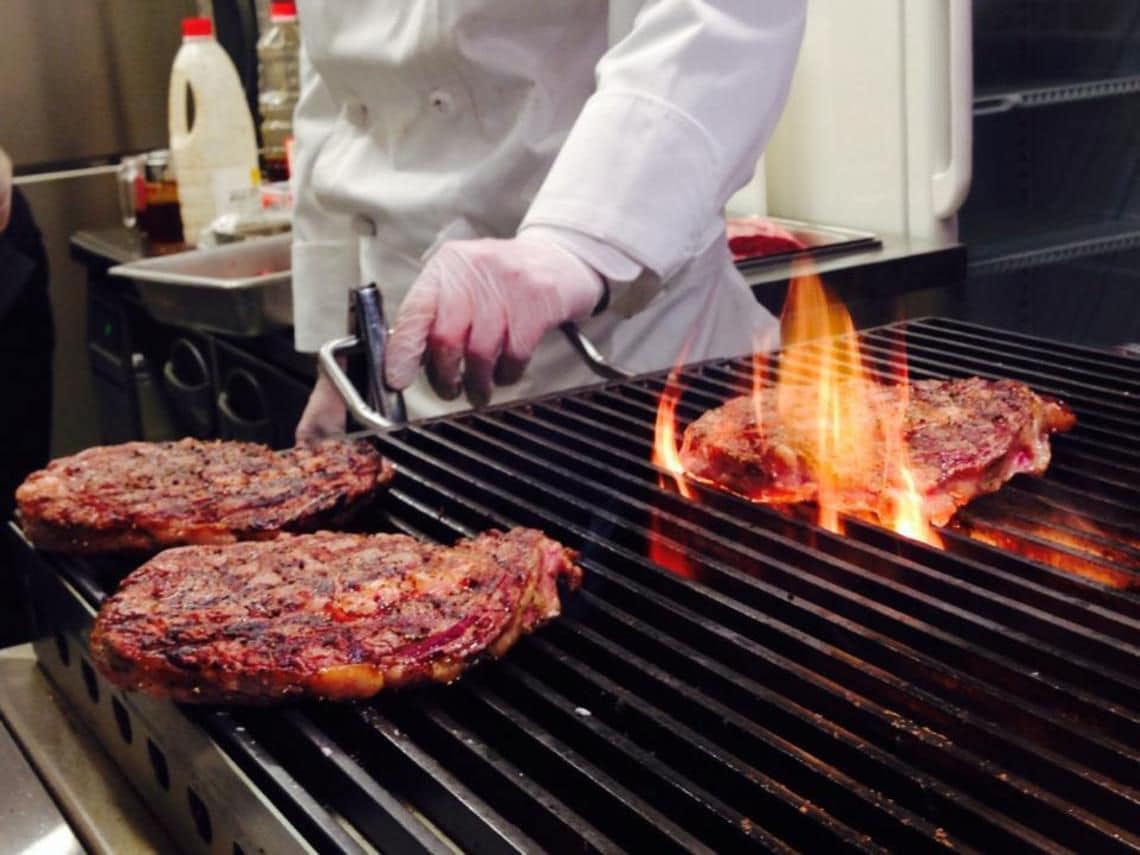
Imagine eating a 300-gram-steak with your feet on the ground without any appetizers. But that is what customers at “Ikinari! Stake (Sudenly! Stake),” a Japanese steakhouse chain operated by Pepper Food Service, are doing. They opened its first restaurant in December 2013 in Ginza, and now has expanded into 38 outlets mainly in central Tokyo.
Their biggest appeal is that you can "eat a big steak at reasonable prices." It costs 6 yen per gram of U.S. rib roast. It was raised from 5.5 yen per gram since May 1 due to rising prices of U.S. beefs. Mr. Hideki Kawano from Pepper Food Service says “Since we are running at an extremely high cost ratio, we are operating at razor-thin margins. So, we have no choice but to raise prices.”
Extremely high cost rate
According to Mr. Kawano, just the meat alone comprises 70 to 80% of the restaurant's cost rate. By adding salads, rice and drinks, the total cost ratio can just barely be kept to about 60%. At “regular” restaurants, cost to sales ratio is about 30%, so you know how unconventional their operation is.
What makes this "unconventionality" possible is the out-of-the box style of having customers eat their steak at counters standing.
Restaurants can usually accommodate larger numbers of customers when there is no chairs. That’s what they thought until they opened the first restaurant.
"Unlike standing bars or standing soba restaurants, steak is eaten with a knife and fork as you spread your elbows to dig in, so it becomes necessary to secure about 80cm of space for each person,” says Mr. Kawano. “The first restaurant had 20tsubo (66m square meters) of space, and was calculated to hold 40 customers, when in reality it could only accommodate 30.”
However, since the turnover rate of dinners was overwhelmingly high, they were able to recover. In the beginning, they thought each customer would occupy their space for about an hour, but when the data was tracked, the real numbers showed that for lunch it was 20 minutes, and dinnertime was 30 minutes. Of course, there's no doubt that the quick skills of the chef to slice the meat, cook it and serve within about five minutes also is a contributing factor.
While numbers vary between restaurants, about 200 to 300 customers visit per day, translating to averages of about 500,000 to 600,000 yen in sales. Thriving restaurants are said to earn about 900,000 yen.
At “Ikinari! Stake,” customers have to know their ways around. After they were escoted at their tables, they go to the “meat” counter and pick the types beef they want to eat (there are four different kinds). Then, their meat is sliced on the spot, cooked and served. This style shortens preparation time, while the method of slicing a big chunk of meat and cooking it right in front of the customer has the effect of a kind of showmanship, thereby creating a higher sense of entertainment value.
Benefits of Standing-only
And the benefits of "standing style" manifest themselves not only in efficiency of space and turnover rate. It appears that eating while treading one's feet can heighten the sense of “eating meat out of instinct.”
"Female customers have said that although it's embarrassing to eat big helpings of meat while sitting properly at a table, it actually feels natural to wolf down meat while standing,” says Mr. Kawano. Practically endorsing those words is the fact that the ratio of female customers is unusually high, around 30%. Even women can "easily chow down a 300 gram chunk of meat,” says Mr. Kawano.
The momentum of "Ikinari! Steak" shows no sign of stopping. They are currently pushing preparations to open a New York restaurant by the end of this year. Although "Japanese tastes" are currently in vogue, how much will steak, basically a re-import, be accepted by Americans?
When asked about strategy, Mr. Kawano says “It’s necessary to innovate. For example while in Japan we would recommend sizes of over 300 grams, in the U.S. we would make that 500 grams and over. We also have a number of ideas, such as a sweet soy sauce-based sauce, or wasabi, which was popular when introduced in Japan as well."




